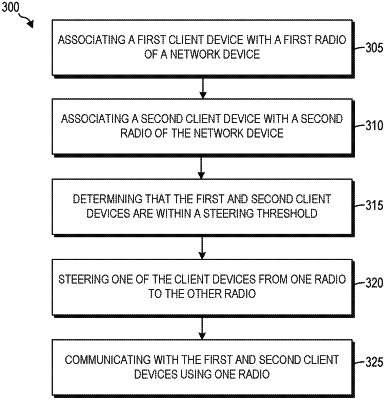| CPC H04W 36/14 (2013.01) [H04L 1/0003 (2013.01); H04W 36/00837 (2018.08); H04W 36/22 (2013.01); H04W 84/12 (2013.01)] | 17 Claims |

|
1. A method, comprising:
associating, by a network device, a first client device with a first radio of the network device;
associating, by the network device, a second client device with a second radio of the network device;
determining first and second estimated locations of the first and second client devices, respectively;
determining that the first and second client devices are within a steering threshold based on distance between the first and second estimated locations of the first and second client devices being within a predetermined distance from one another by determining that the first and second client devices are registered to first and second users, respectively, and that the first and second users are the same;
based on the determination that the first and second client devices are within the steering threshold, mitigating channel interference between the first and second radios of the network device by steering, by the network device, the second client device from the second radio to the first radio; and
communicating, using the first radio of the network device, with the first and second client devices.
|